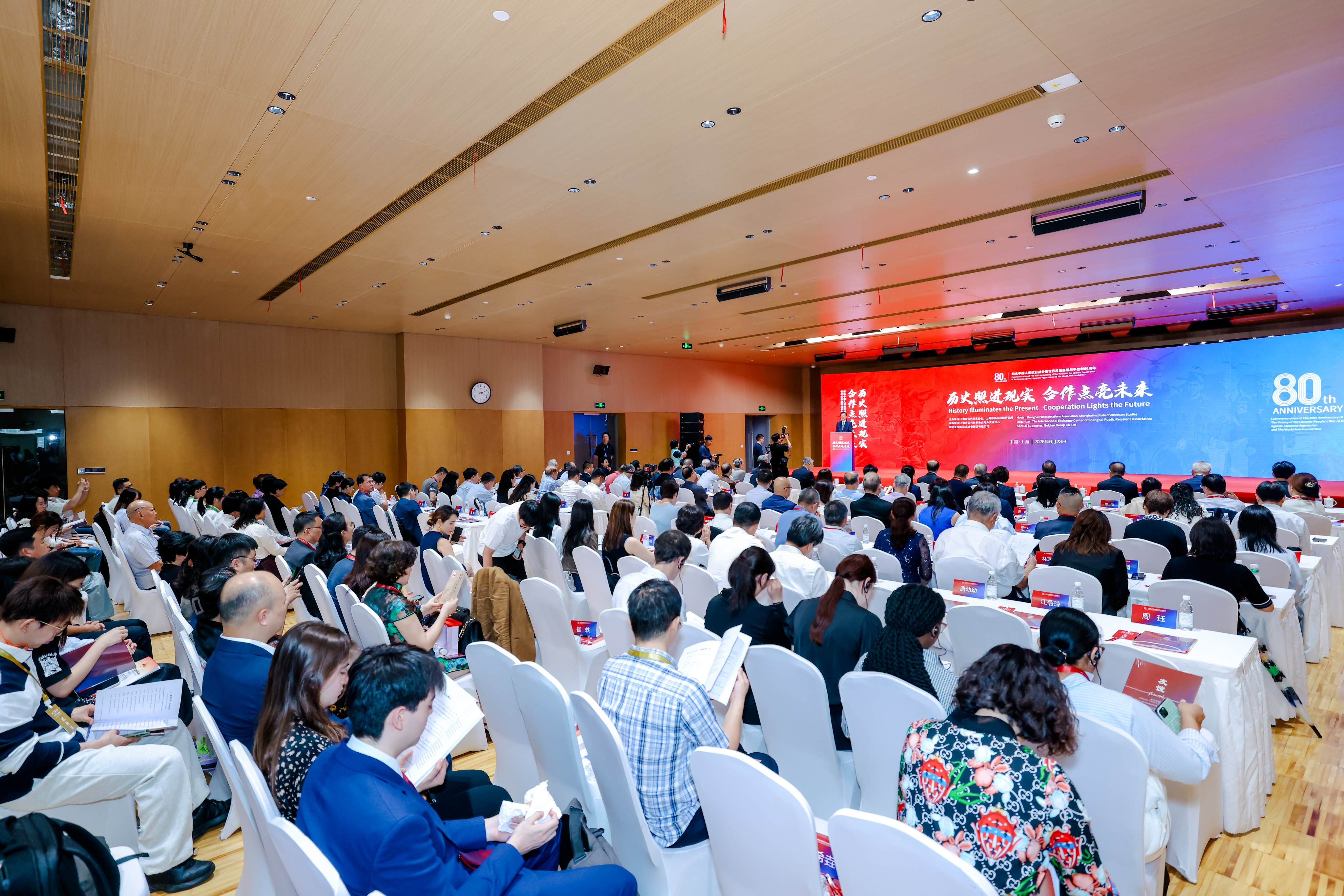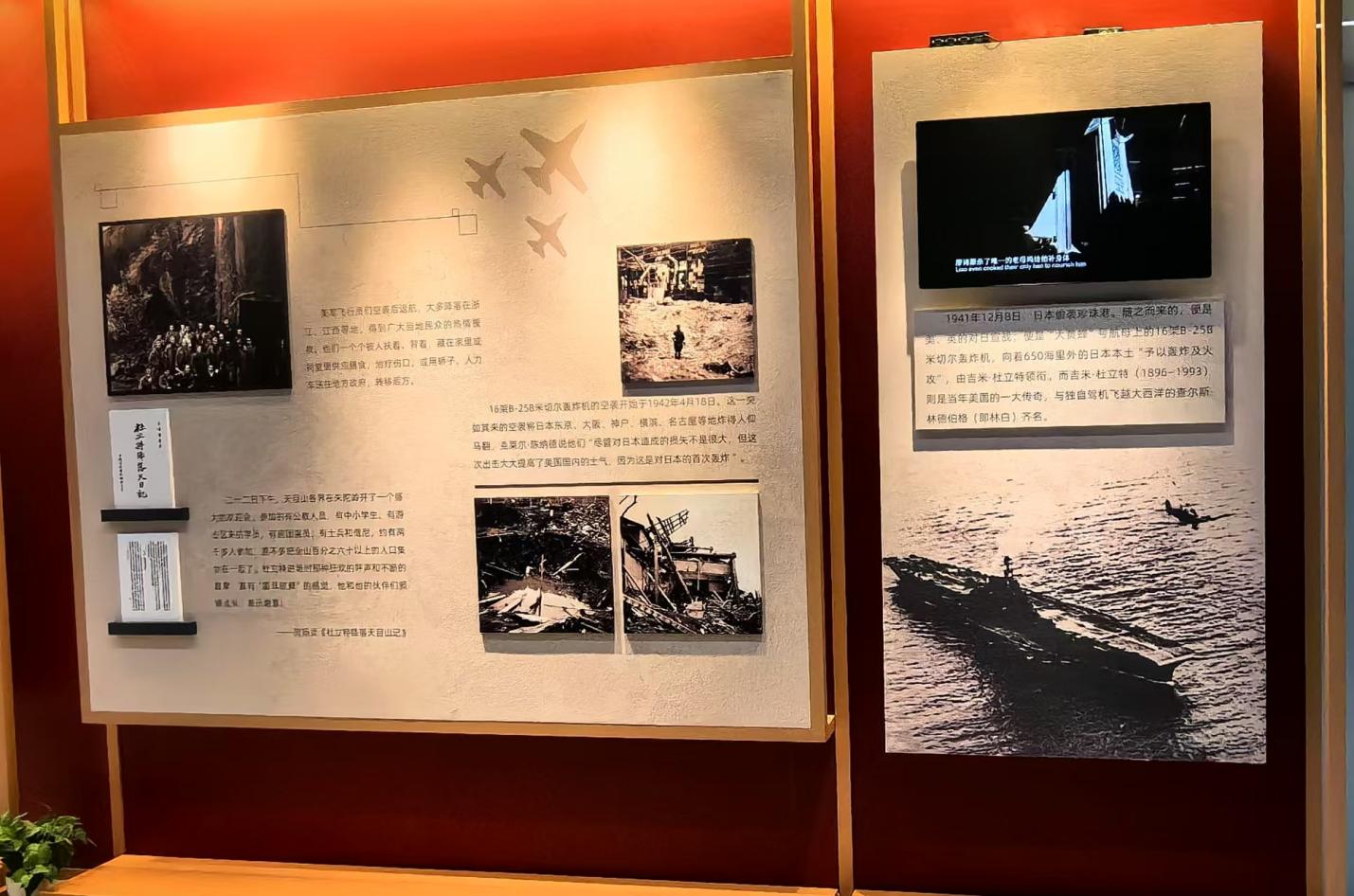
(Yicai) June 25 -- More than 100 scholars, business leaders, and descendants of Chinese and American veterans who fought together against Japan during World War II gathered in Shanghai to reflect on shared history and seek inspiration for future cooperation.
The commemorative event, titled "History Illuminates the Present, Cooperation Lights the Future," was held on the 80th anniversary of the Chinese People's War of Resistance Against Japanese Aggression. It was organized by the Shanghai Public Relations Association, the Shanghai Institute of American Studies, and other institutions.
The event featured extensive displays of photographs of the Flying Tigers -- officially the American Volunteer Group of the Chinese Air Force -- and the Doolittle Raid rescue efforts, in which Chinese civilians and soldiers helped American airmen after the 1942 raid on Japan.

According to public records, the Flying Tigers were formed in 1941, when 250 American volunteers led by General Claire Chennault arrived in China. Chen Hao, director of the Kunming Museum, noted that when the group landed in Kunming 80 years ago, they brought not only military support but also deeper economic exchange. The daily needs of the American pilots created a demand for local goods and services, while Chinese communities made significant economic sacrifices to support the war effort.
“What we present today comes from the memories preserved by later generations,” said Chen, adding that government officials, descendants of the Flying Tigers, and cultural advocates have made generous donations. The museum has collected over 2,000 Flying Tigers-related artifacts -- some of which were displayed in Shanghai.
Chen also referenced “The Hump,” one of the most dangerous airlift operations of WWII. The route, crossing the Himalayas, was used to deliver aid to Chinese forces resisting the Japanese invasion. Public records show that over 1,000 Chinese and American crew members lost their lives flying the route.
From April 1942 to August 1945, the China National Aviation Corporation flew 80,000 sorties, while the US military deployed 2,100 aircraft along the route from Assam, India to Kunming, China. Over 84,000 personnel from both countries participated, transporting 850,000 tons of strategic supplies and nearly 33,500 combat personnel.
Chen emphasized that the success of The Hump relied on unprecedented military-civilian cooperation. From building airfields to daily logistics, local communities provided essential ground support, forming a comprehensive supply chain that sustained operations for more than three years.

Another example of deep bilateral cooperation was the 1942 Doolittle Raid. After US bombers launched a surprise attack on Japan in April 1942, many were forced to crash-land across China’s Zhejiang and Anhui provinces due to fuel shortages. Chinese civilians carried out widespread rescue operations to aid the American airmen.
Zheng Weiyong, vice president of Quzhou Society for the History of the Doolittle Raid, spent more than a decade documenting how Chinese civilians risked their lives to save the American crews.
“Despite language barriers, cultural differences, and limited prior contact, local people volunteered to help,” said Zheng. “This was because Americans and Chinese shared a common goal: defeating fascism and rebuilding world peace.” This historical precedent shows that sustainable cooperation requires shared goals that go beyond commercial interests, he added.
Modern-Day Implications
From The Hump to today’s Belt and Road Initiative, southwest China has long served as a gateway to global markets. Wartime logistics demonstrate that true cooperation involves more than economic transactions -- it requires local support, multilingual services, and trust between foreign and local personnel.
“This was a joint effort,” said Chen, referring not only to pilots and mechanics but also to ground crews, translators, local officials, and citizens. This model, he said, still offers lessons for international economic cooperation today.
China’s collaboration with Southeast Asia echoes these wartime experiences. The Kunming Museum is expanding its cultural exchanges with the region, including photography exhibitions in Singapore and joint projects with regional artists.
The Shanghai event underscored how historical partnerships can serve as templates for addressing modern challenges. Eric Zheng, president of AmCham Shanghai and advisor to the Sino-American Aviation Heritage Foundation, noted that commercial cooperation today continues to reflect the Flying Tigers’ spirit in peacetime.
AmCham member companies often say that despite challenges in US-China relations, their teams work closely together every day, learning from each other and building strong partnerships and friendships, Zheng said, adding that it is this grassroots people-to-people connection that defines the resilience and vitality of US-China ties.
“The US and China have a long history of cooperation—between our countries and our people,” said Karl Eikenberry, former US ambassador to Afghanistan and professor at Schwarzman College, Tsinghua University. He expressed hope that going forward the two nations could continue to find ways to cooperate.
Editor: Emmi Laine